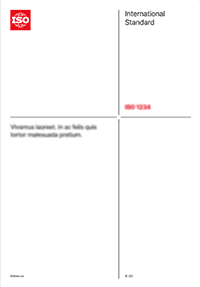Abstract
This document collects available data on combined chemical resistance of thermoplastic materials typically used to manufacture piping components for industrial applications, against fluids over a range of temperatures.
The base thermoplastic materials covered by this classification are:
Polyethylene PE
NOTE 1 The PE considered in this document corresponds to PE-HD, with a minimum density value of 0,935 g/cm3 (e.g.: PE63, PE80, PE100, PE100-RC, PE-RT).
Polypropylene PP (PP-R and PP-RCT, PP-H, PP-B)
Polyvinyl chloride, unplasticized PVC-U
Polyvinyl chloride, chlorinated PVC-C
Polybutylene PB
Acrylonitrile/butadiene/styrene ABS
Polyvinylidene fluoride PVDF
NOTE 2 This document considers homopolymer PVDF.
Cross-linked polyethylene PE-X (PE-Xa, PE-Xb, PE-Xc)
Ethylene chloro trifluoro ethylene ECTFE
Polyamide, unplasticized PA-U (PA-U11, PA-U12)
NOTE 3 This document focuses on PA-U11 and PA-U12 only, as these long chained PA-U are standardized according to ISO 16486-1; short chained (e.g. PA 66) and plasticized PAs are not used for monolithic plastic piping components.
Polysulfone PSU
Perfluoralkoxy PFA
NOTE 4 Temperatures higher than 200°C can be applied after an evaluation with the raw material manufacturer.
Polytetrafluoroethylene PTFE
NOTE 5 Temperatures higher than 200°C can be applied after an evaluation with the raw material manufacturer.
Polyphenylene sulphide PPS
NOTE 6 PPS is new with regards to industrial application and chemical resistance issues; for this reason, manufacturers and end-users are advised to assess the chemical suitability of the material.
General information
-
Status: PublishedPublication date: 2021-06Stage: International Standard published [60.60]
-
Edition: 2Number of pages: 215
-
Technical Committee :ISO/TC 138/SC 3
- RSS updates
Life cycle
-
Previously
WithdrawnISO/TR 10358:1993
-
Now


